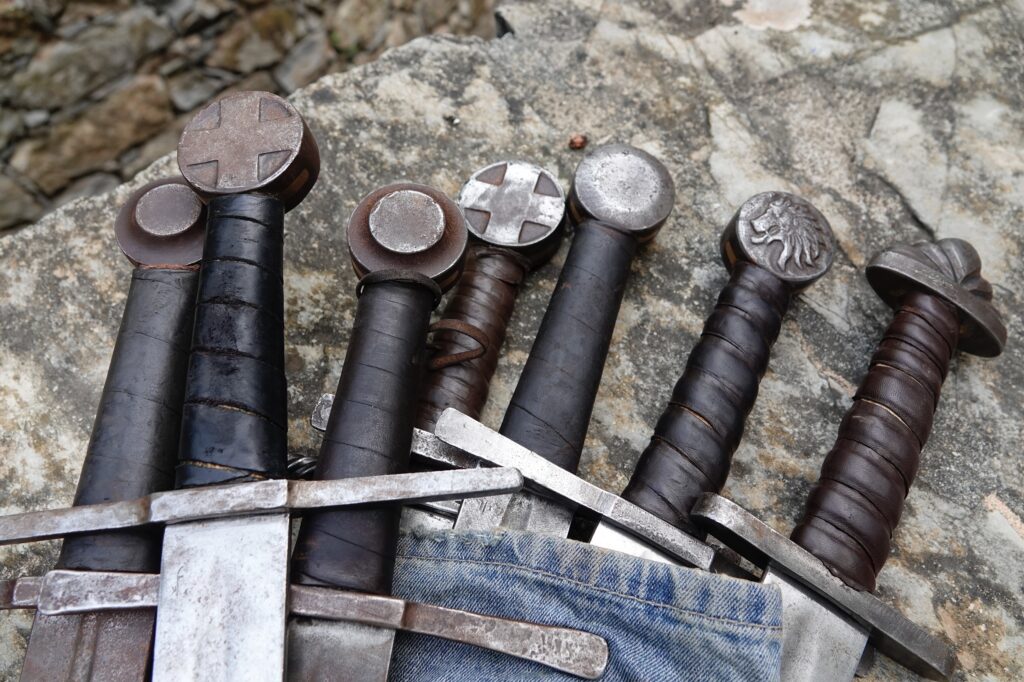
Sigurd Snake in the Eye – Viking King

If you have played Assassin’s Creed Valhalla you will know Sigurd Snake in the Eye is the best friend of the game’s protagonist Eivor. How much of the game is accurate and who was Sigurd Snake in the Eye?
This article takes an in depth look at Sigurd Snake in the Eye including his unusual name and who he really was.
Let’s discover another Viking from the Assassin’s Creed Valhalla game.
When Was Sigurd Snake in the Eye Born?
We don’t have any sources to tell us when Sigurd was born but we have various sources that allow us to place a rough estimate for his date of birth.
We know Sigurd was alive when the Great Heathen Army invaded England, but we don’t know how old he was. We know he didn’t personally participate in the invasion, and this might be because:
- He was too young,
- He was occupied elsewhere.
The Great Heathen Army invaded England in 865. The Norse sagas claim this invasion was in retribution for Sigurd’s father’s death. Sigurd was so upset by the death of Ragnar Lodbrok (his father according to sagas) that he cut himself to the bone.
This means we can semi-reliably place Sigurd as alive in 865 and old enough to have his own weapon to inflict a self-injury.
But we can also deduce because he didn’t set out on the invasion he was probably too young. Bearing in mind Viking men used to come of age much younger than modern standards, it is fairly safe to assume in 865 he was under the age of 11.
This puts the date of Sigurd’s birth roughly from 854-858. It was common for Vikings to come of age after the onset of puberty. It was also common for young boys to carry knives as tools for daily life and hunting.

Supposed Son of Ragnar Lothbrok/Lodbrok
Sigurd is one of six Vikings who are a claimed descendent of Ragnar Lodbrok (a legendary Viking). In my Ivar the Boneless article I explored the plausibility of Ragnar being a real Viking and his descendants.
In the case of Sigurd, we have conflicting information about his father, some sources clearly state he is the son of Ragnar, and other sagas mention a step-father.
It is probably the case Sigurd was not the son of Ragnar because if he were, his mother would not have had another husband. Aslaug (Sigurd’s mother) would not have been permitted to marry another man when wed to Ragnar.
Sagas clearly tell of Sigurd aged three being under the care of another man acting as a father. It is likely this man was his father. We also have the sage that mentions Sigurd being angry and cutting himself at Ragnar’s death which he wouldn’t have been able to do at aged three.
Because we have contradictory sagas and because Vikings of the time seemed keen to trace lineage to Ragnar, it is reasonable to conclude Sigurd was in fact someone else’s son.
Why Was He Called Sigurd Snake in the Eye?
Sigurd Snake in the Eye got his name from a distinct mark/birth defect in his eye. The disfigurement isn’t clearly described but the accounts state it was ‘in’ his eye and resembled an ouroboros.
What is an Ouroboros?
Ouroboros have been used as symbols since the Ancient Egyptians and are serpents or dragons biting their own tails.
In Viking mythology, the entire world is encircled by an ouroboros called Jormungandr, a giant serpent that is a son of the Norse god Loki.
What Deformity did Sigurd Snake in the Eye Have?
The saga that tells us about Sigurd having a deformity attests to a white ouroboros in Sigurd’s eye, encircling his iris.
This is interesting because the conditions we know to do this are Arcus Senilis or Axen-Rieger Syndrome.
Arcus Senilis – is the most likely cause of Sigurd’s deformity as it is sometimes observed in one eye rather than the other. It can be something an individual is born with and is known as Arcus Juvenilis.
Axen-Rieger Syndrome – this diagnosis presents a really fascinating insight into Sigurd’s parentage and suggests a possible shared parentage with Ivar the Boneless. Axen-Rieger Syndrome is unlikely to be the cause of Sigurd’s eye condition as it presents bilaterally (in both eyes).
If he did indeed have this condition, it’s also known to cause bone abnormalities – something we know Ivar the Boneless had.
Lastly, a white ring around the eye can be caused by having too much calcium in the blood stream in a condition known as Limbus Sign.
How Close Was Sigurd Snake in the Eye to His Assassin’s Creed Valhalla Portrayal?
Assassin’s Creed Valhalla presented Sigurd as a young boy during a massacre on his clan by a rival leader. This is certainly the case in the sagas of Sigurd except the rival leader was called Eysteinn Beli (a Swedish King) not Kotve the Cruel.
He wasn’t known as a King of Norway, instead ruling over other kingdoms, primarily Denmark.
He also inherited the following kingdoms in the ‘Ragnarssona pattr’:
- Zealand (Danish Island)
- Scania (Southern Sweden)
- Halland (Southern Sweden)
- Viken (a strait running between Norway and Sweden).
Unlike the Sigurd of Assassin’s Creed Valhalla, Sigurd Snake in the Eye had little to do with Norway.
To this end, Assassin’s Creed Valhalla tried to stay close to the sagas but transposed them to different areas to tie the story together.
How Did Sigurd Snake in the Eye Die?
At the time when Sigurd Snake in the Eye was king, there are contemporaneous sources that highlight two prominent Vikings, Sigfred and Halfdan.
Baring in mind Sigurd is a son of Ragnar alongside Halfdan, it is likely Sigurd and Sigfred were the same person.
Sigurd (as Sigfred) ruled Denmark from 873. This reign matches the reign ascribed to Sigurd in the sagas.
At some point however he was ousted from his throne and set his eyes on kingdoms to the south, specifically France. In 885 he was in France, besieging the city of Paris and had later moved to Belgium and northern Germany.
We know Sigurd died in battle with two years provided. Either 887 or 891. It is likely the latter date is correct as there are sources that record a Battle of Leuven in 891 with Sigfred as a commander. Sigfred was killed in this battle and the Vikings suffered a catastrophic defeat.
What Picture Does History Paint of Sigurd Snake in the Eye?
The sagas and later depictions of Sigurd as a strong leader with God-given rights don’t match up to the real Sigurd.
It is clear he had little success in life except taking up his birth right and ruling Denmark for a very short period of time. He assumed the throne in 873 and was in France by 885, giving him a reign of roughly 10-12 years.
He lost his throne, was unsuccessful in taking Paris and ultimately died in a battle where his forces were completely outmatched. A far cry to the Viking warrior and rule he is often portrayed as.
He likely died in his mid to late 30s, possibly reaching the age of 40. He died a fallen king, on foreign soil in a battle he should never have undertaken. A world away from the prophesised great Viking he was supposed to be.